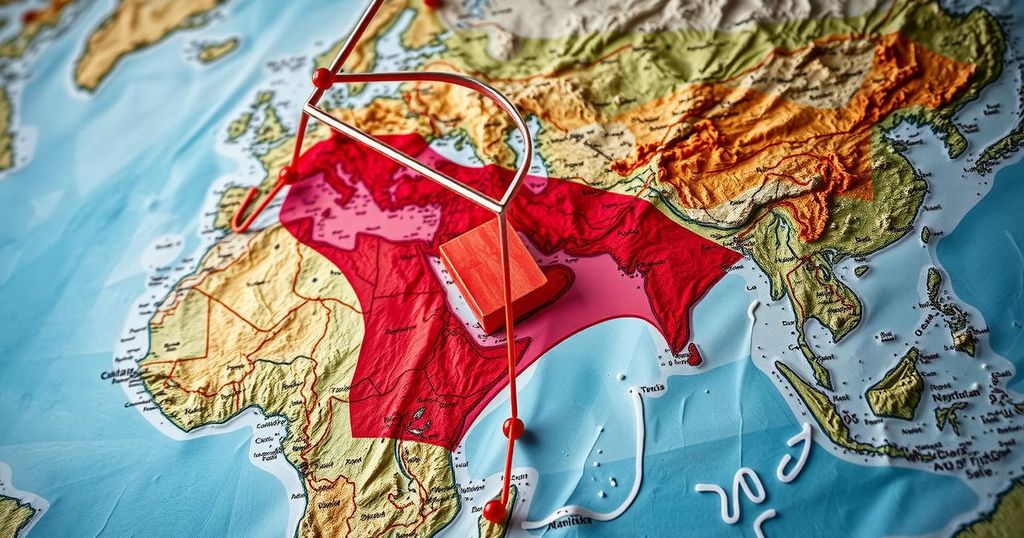On January 2, a 6.1-magnitude earthquake struck Chile, following various recent seismic events in California and Alaska. This report outlines a series of earthquakes, including significant magnitudes and their associated depths, emphasizing the ongoing seismic activity in these regions as monitored by the USGS.
On January 2, a significant earthquake registering at a magnitude of 6.1 occurred in Calama, Chile, as reported by the United States Geological Survey (USGS). The quake struck at a depth of 99 kilometers (approximately 61.5 miles) and was felt by many residents, with 25 reports received at the time of publication. This seismic activity followed a 4.7-magnitude earthquake in California on January 1, which was centered in Cobb at a shallower depth of 1.1 kilometers (approximately 0.7 miles).
Additionally, this series of earthquakes links back to a 3.3-magnitude tremor reported in Alaska on December 30, centered in Nikolski, which occurred at a depth of 39.5 kilometers (about 25 miles). Just prior to that, on the same day, another 3.3-magnitude quake was recorded in Fort Bidwell, California, at a depth of 3.4 kilometers (roughly 2.1 miles). Furthermore, a more robust quake measuring 6.7 originated in the Kuril Islands on December 27, depth recorded at 162.6 kilometers (approximately 101 miles).
The Kuril event followed a 3.6-magnitude earthquake in McCarthy, Alaska, which was detected on December 26 at a shallow depth of 8.1 kilometers (about 5 miles). This sequence of occurrences can be traced back further to a 3.0-magnitude earthquake in Clayton, California, on December 25, which struck at a depth of 13.2 kilometers (approximately 8.2 miles). The recent earthquake activity culminates in the context of seismic events, which include a 5.9-magnitude earthquake in Cuba on December 23, centered in Guisa at a depth of 22.2 kilometers (approximately 13.8 miles).
Seismic activity is a natural phenomenon resulting from the movement of tectonic plates beneath the Earth’s surface. Earthquakes can vary widely in magnitude and depth, influencing the degree of shaking felt by populations in affected areas. Regions like Chile and California are particularly susceptible to earthquakes due to their location along major tectonic plate boundaries. Monitoring organizations such as the United States Geological Survey provide ongoing reports and data regarding seismic activities to inform the public and enhance safety measures.
In summary, the extensive series of notable earthquakes highlighted in this report underscores the continuous seismic activity experienced across various geological regions. The events primarily occurred across Chile, California, and Alaska, with magnitudes spanning from 3.0 to 6.7. Such occurrences not only emphasize the inherent volatility of these regions but also necessitate heightened awareness and preparedness in earthquake-prone areas.
Original Source: www.steveharveyfm.com






